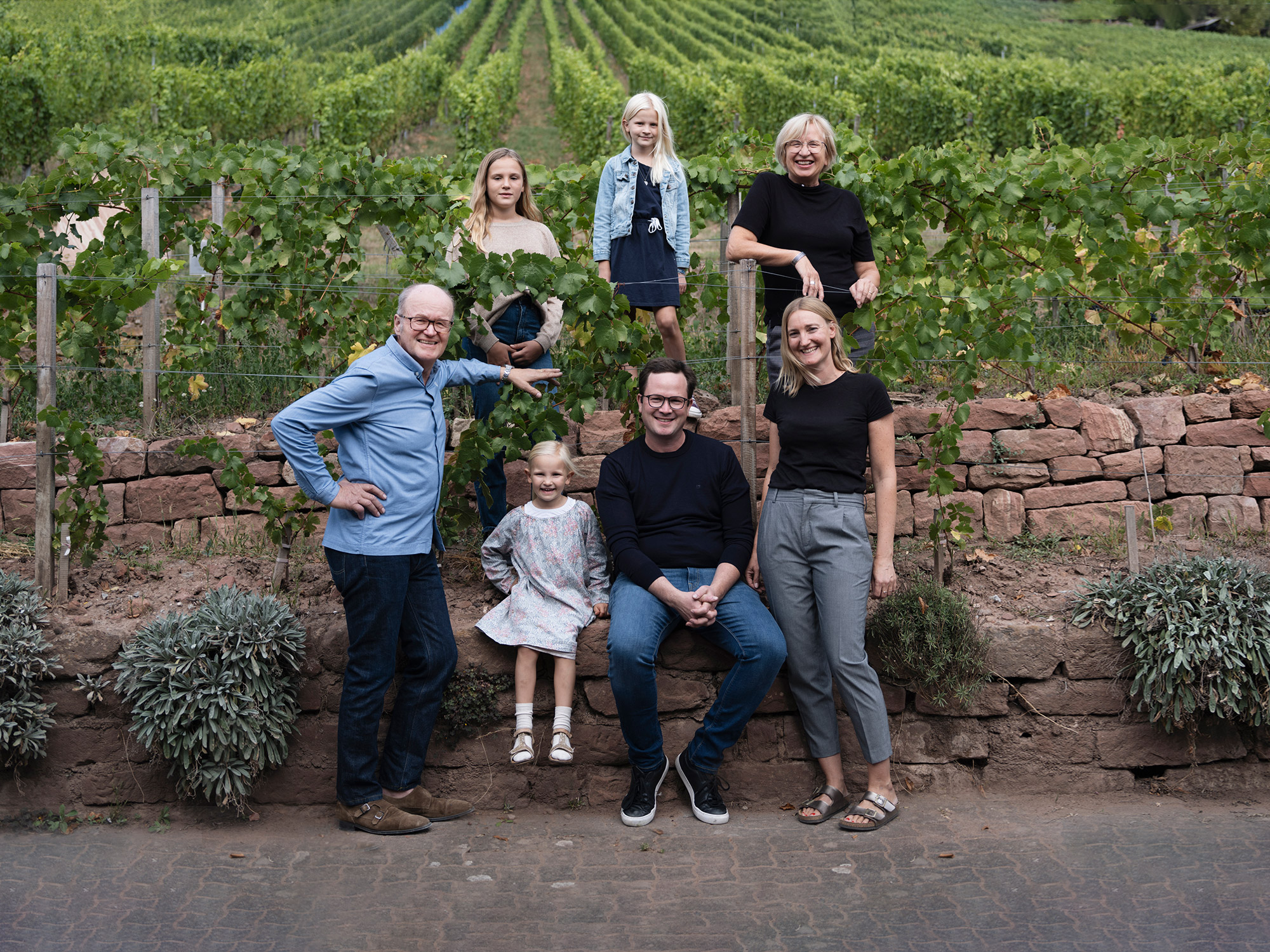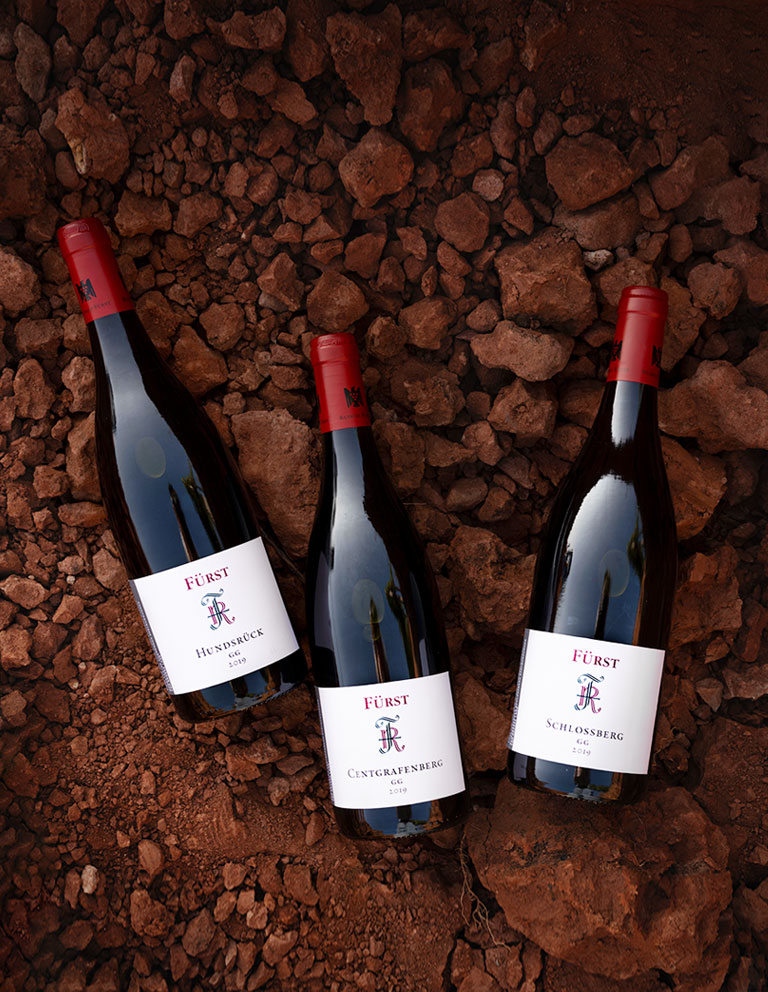
“They just carry on crafting these gorgeous wines with uncommon sensitivity, great intuition and with just one aim in mind: elegance.”
– Anne Krebiehl MW
Weingut Rudolf Fürst has a long tradition. The Franconian family Fürst can document their history as winegrowers back to 1638. Paul’s father, who died at a very early age, had a small farm in the old town of Bürgstadt. He raised animals and cultivated fruit trees, vines and even tobacco, which was once common in the region.
When Paul and Monika Fürst took over the winery in 1979, they built today’s estate buildings on the outskirts of the village. The winery lies nestled in the heart of the Centgrafenberg vineyard with a magnificent view of the medieval half-timbered village of Miltenberg. Because the land was parcelled off through the inheritance of successive generations, the remaining vineyard area covered only 1.5 hectares. Family Fürst renovated and re-cultivated the particularly beautiful, steep parcels in the best sites. They gradually expanded the vineyard area to the current 21 hectares, 60 % of which is planted to Spätburgunder (Pinot Noir).

At a time when the cultivation and vinification of top quality Spätburgunder was not yet a topic in Germany, Paul Fürst and a handful of renowned German vintner friends were already engaged in a lively exchange with leading Pinot Noir wineries in Burgundy, Oregon and the Bündner Herrschaft in Switzerland. The declared goal was to learn about the intricacies of the variety and gain knowledge in the fine art of producing great Spätburgunder. This pioneering work began to bear fruit in 1989 when the first breakthrough was achieved.
After completing his studies in viticulture and oenology in Geisenheim and gaining experience in Burgundy, Alsace, Spain, South Africa and top wineries in Germany, Sebastian Fürst joined the family enterprise in 2007. One priority is the environmental focus of the winery. Another is the vigorous implementation of a Burgundian style of vinification, for example whole cluster fermentation.

Family Fürst :
Paul and Moni, Sebastian and Isabell
with Frida, Lisa and Rosa

Sebastian and his wife Isabell took over the winery in 2018. Father and son continue to work together closely and are driven by their shared aspiration to constantly improve their artisanal techniques to achieve utmost quality. Wine tasting and vinification were given a new home in 2010. The attractive ensemble is a new, modern interpretation of the classical regional barn style – in wood and concrete, minimalistic and functional.
Weingut Fürst has collected many prestigious accolades. Paul was named German Winemaker of the Year in 2003 and Sebastian achieved this distinction in 2018. Paul was honoured for his life’s work in 2020.
Meticulous care of the vines is the primary focus in the vineyard. Selection of best vine material and old clones is compulsory, as is high planting density and a low vine training system. The vineyards are supplied with self-produced compost. Selective manual harvest takes place in several passes through the vineyard. Soils with high solar radiation, superbly cultivated vines and very low yields lead to a wine quality that is recognised nationally and internationally – now in over 30 countries around the world.

“Wine is a product of nature – our foundation.
We simply do what is best for the wine. And if the grapes are good, the wine will also be good. On the day of the harvest we know exactly what treasure we hold in our hands.”
– Paul Fürst

Natural, gentle, handcraft is applied to the vinification of all of our vineyards. Wines clarify themselves during the long maturation on the lees. After fermentation on the mash in open wooden vats, the red wines are basket pressed. The wines then mature for 13 to 18 months in Burgundian barrels (228 litres) and are subsequently bottled unfiltered. The white wines are fermented in large wooden casks and small barrels or in stainless steel tanks and matured for six to sixteen months.

